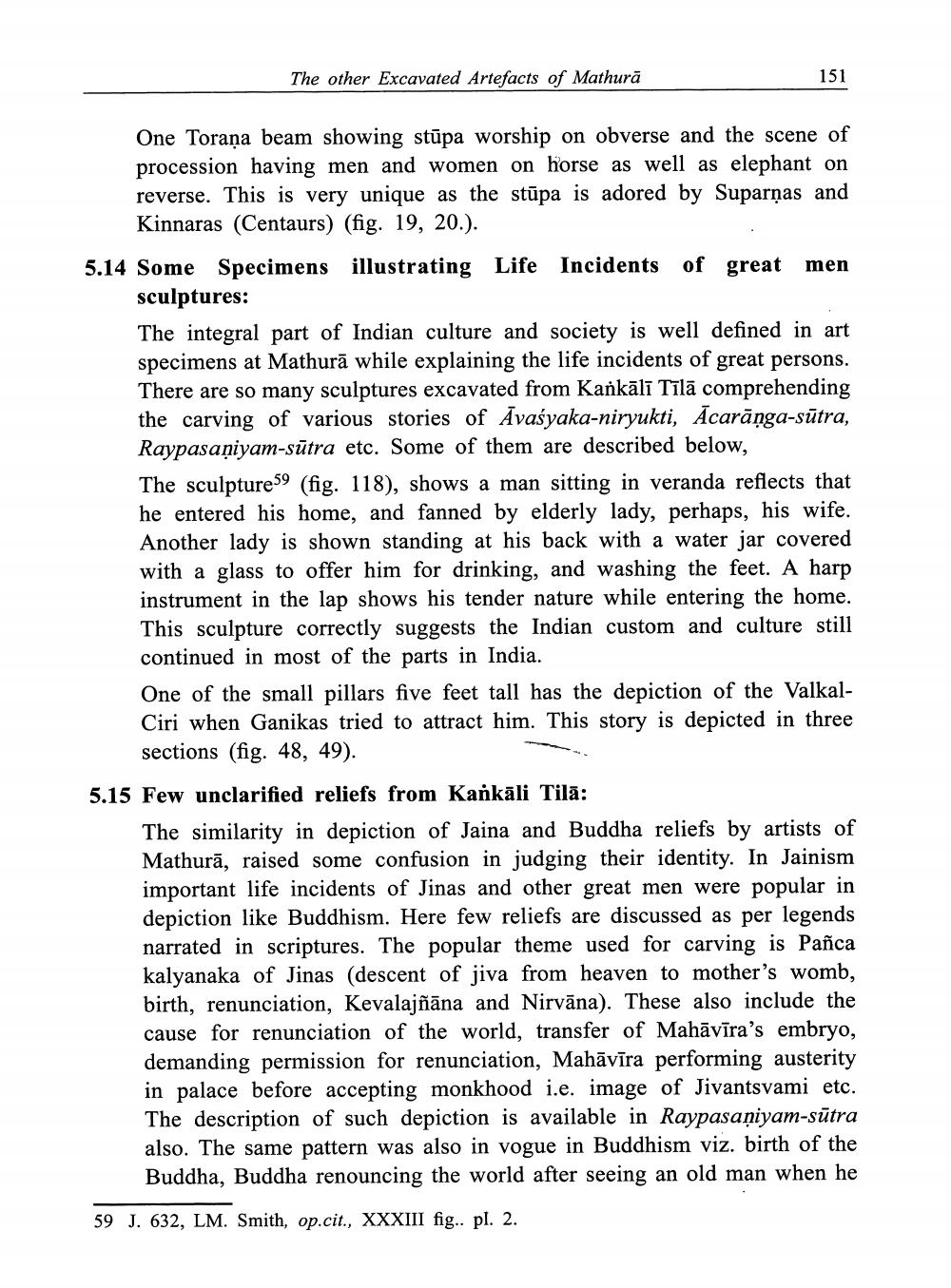________________
The other Excavated Artefacts of Mathurā
151
One Toraņa beam showing stūpa worship on obverse and the scene of procession having men and women on horse as well as elephant on reverse. This is very unique as the stūpa is adored by Suparnas and Kinnaras (Centaurs) (fig. 19, 20.).
5.14 Some Specimens illustrating Life Incidents of great men
sculptures: The integral part of Indian culture and society is well defined in art specimens at Mathurā while explaining the life incidents of great persons. There are so many sculptures excavated from Kankālī Tīlā comprehending the carving of various stories of Āvaśyaka-niryukti, Acarāṇga-sūtra, Raypasaniyam-sūtra etc. Some of them are described below, The sculptureS9 (fig. 118), shows a man sitting in veranda reflects that he entered his home, and fanned by elderly lady, perhaps, his wife. Another lady is shown standing at his back with a water jar covered with a glass to offer him for drinking, and washing the feet. A harp instrument in the lap shows his tender nature while entering the home. This sculpture correctly suggests the Indian custom and culture still continued in most of the parts in India. One of the small pillars five feet tall has the depiction of the ValkalCiri when Ganikas tried to attract him. This story is depicted in three
sections (fig. 48, 49). 5.15 Few unclarified reliefs from Kankāli Tila:
The similarity in depiction of Jaina and Buddha reliefs by artists of Mathurā, raised some confusion in judging their identity. In Jainism important life incidents of Jinas and other great men were popular in depiction like Buddhism. Here few reliefs are discussed as per legends narrated in scriptures. The popular theme used for carving is Pañca kalyanaka of Jinas (descent of jiva from heaven to mother's womb, birth, renunciation, Kevalajñāna and Nirvāna). These also include the cause for renunciation of the world, transfer of Mahāvīra's embryo, demanding permission for renunciation, Mahāvīra performing austerity in palace before accepting monkhood i.e. image of Jivantsvami etc. The description of such depiction is available in Raypasaņiyam-sūtra also. The same pattern was also in vogue in Buddhism viz. birth of the Buddha, Buddha renouncing the world after seeing an old man when he
59 J. 632, LM. Smith, op.cit., XXXIII fig.. pl. 2.




